Assessing Urban Livability through Residential Preference—An International Survey
Abstract
1. Summary
2. Data Description
- General information: As the introductory part of the questionnaire, this section contains questions about demography (sex, age, marital status, education, household members, etc.) and information on the monthly income of the household.
- Sense of community and belonging: In the first thematic part of the survey, participants were asked about the neighborhood and community they lived in and their general satisfaction with it. The community means their home and the group of people living in its closest surroundings (few buildings/building blocks), and the neighborhood is the part of the city where this community lives. Community has a strong role in the perception of livability, which we wanted to consider in our assessment, beyond the rather physical parameters, such as urban environment or mobility [12].
- Urban form: Participants were also asked about the built environment of their neighborhood. Built environment consists of the buildings, public spaces, and other elements of the street such as trees and street furniture. Urban form is a key element in the conceptual framework of livability, namely livability is interpreted as the quality of the person–environment relationship. Most of the existing livability definitions emphasize the role of the environment in representing the quality of life of the residents in a city [1,13].
- Mobility: This part of the questionnaire investigated transportation mode preferences according to different activity types, motivations for dominant car usage, importance, and availability of different mobility-related factors, perceived transportation safety, as well as the self-reported overall quality of walking, cycling, and transportation. The important role of mobility in urban livability was a key hypothesis in our livability assessment framework; see Section 1, Figure 1 and our research article for further details [4].
- Urban functions: In the third part of the survey, people were asked about how they travel within the city and for what purposes (e.g., to work or school, for shopping, etc.). Similarly to urban form, urban functions are essential in satisfying the needs of residents in order to provide better quality of life. Urban functions represent how the urban environment is used or can be used, see also Figure 1.
- Housing: This part of the questionnaire addressed the housing conditions and its infrastructure. Housing belongs to the finest spatial scale, a most private aspect of urban livability, and housing conditions tend to effect the perception of livability, even if it is less likely to be improved by urban planning directly [1].
- General satisfaction: as a final topic, we asked the participants about their general satisfaction in terms of city quality, which represents their self-reported livability value.
3. Methods
4. Content and Findings of the Questionnaire per Thematic Groups
4.1. General Information
4.1.1. Questions
- 1. What is your place of residence (country, city)?
- 2. Are you a male or a female?
- 3. What is your age?
- Below 18 years/18–25/26–35/36–45/46–55/56–65/Above 65 years
- 4. What is your current marital status?
- Married/Not married, living with partner/Separated/Divorced/Widowed/Single (never married)/Other (please, specify):
- 5. Your nationality:
- 6. How many people live with you in your household? (including you)
- 7. Besides yourself, do you have any of the following people living in your household?
- Child(ren) under 18/Child(ren) 18 or older/Parents (yours)/Other adult relative or friend 18 or older/I live alone
- 8. What is the highest level of education you have completed?
- Elementary school/High school/Post-high school education or training (no degree)/Bachelor degree (or equivalent)/Master degree (or equivalent)/PhD or higher/Other:
- 9. How much is your average net (after paying taxes if applies) monthly household income?
- (options vary from country to country)
- 10. How would you consider your annual household income in terms of your basic needs (e.g. housing, food, etc.)?
4.1.2. Findings
4.2. Sense of Community and Belonging
4.2.1. Questions
- 1. What is the name of the neighborhood you live in? (If there is no official name for it: How do residents call that area?)
- 2. How long have you lived in this neighborhood?
- Less than 5 years/5 up to 15 years/15 up to 25 years/25 up to 35 years/more than 35 years
- 3. Are you satisfied with living in this neighborhood? (Does it fulfill your needs and expectations to live a good life?)
- Completely/Mostly/Somewhat/Not at all
- 4. How well do each of the following statements represent how you feel about your community (the people living in your neighborhood)?
- Not at all/Somewhat/Mostly/Completely
- Being a member of this community makes me feel good.
- People in this community have similar needs, priorities, and goals.
- I trust people in this community.
- I can recognize most of the members of this community.
- Most community members know me by face.
- Most community members know me by name.
- Being integrated into this community is important to me.
- I am with other community members a lot and enjoy being with them.
- I expect to be a part of this community for a long time.
- Members of this community have shared important events together, such as holidays, celebrations, or disasters.
- Members of this community care about each other.
- Members of this community fairly plan outdoor activities and events together.
4.2.2. Findings
4.3. Urban Form
4.3.1. Questions
- 1.a How important do you think it is to have the following in your neighborhood?
- Not at all/Somewhat/Mostly/Completely *
- 1.b Does the neighborhood where you live have the following? Yes/No/Not sure
- Buildings in a street with similar style (architectural design).
- Buildings in a street with similar age.
- Buildings in a street with similar height.
- Buildings in a street with the same function (only residential/commercial/administrative/industrial).
- Buildings only lower than five floors.
- Mixed land use (multiple functions—residential/commercial/etc.—within the same building block/neighborhood so they are more easily accessible also by walking).
- Lower building density (wider streets and open spaces, fewer number of floors, bigger space between buildings).
- Homogeneous, harmonious streetscape (the building looks similar—similar height, style, age etc.).
- Something interesting to see while walking (e.g., storefronts, lively streetscape with traffic and other people, interesting buildings/statues).
- Street furniture (benches or chairs to sit, dustbins, shade, drinking fountains, etc.).
- Trees along the streets.
- Aesthetic streetscape.
- Public squares or plazas to linger.
- 3. How would you rate the overall quality of the built environment in your neighborhood? (also based on the features mentioned above)
- Excellent/Very good/Good/Fair/Poor
4.3.2. Findings
4.4. Mobility
4.4.1. Questions
- 1.a How often do you use the following modes of transport to go to work/school?
- 1.b … to go shopping?
- 1.c … to reach your destination for free time activities (e.g., meeting friends, going to restaurant, cinema, museum, sport facilities etc.)?(if the given activity applies, selecting multiple modes per activity is possible)Car/Public transport/Cycling/Walking/Other
- All the time (every day, almost every day)
- Most of the time (2–4 times in a week)
- Occasionally (4–5 times in a month)
- Rarely (1–2 times in a month)
- Almost never (less than 10 times in a year)
- I do not use this mode
- 2. If you selected “automobile” for daily mobility at least once for the three questions above, to what extent do the following statements represent your feeling about transportation in the city?
- I use a car because it is convenient.
- I use a car because that is the only way to reach my destination.
- I use my car because my destinations are usually too far.
- I use my car because usually that is the fastest way to reach my destination.
- I use a car because I am not able to walk or cycle due to my health conditions.
- I use a car because public transport is not an alternative (too long/too many changes/poor accessibility).
- I would walk/cycle more if it would be safer.
- I would walk/cycle more if there would be more/better infrastructure. (e.g., sidewalks, bicycle lane, intersections with traffic light, etc.)
- Using my car is expensive, but there are no more suitable alternatives.
- I use my car because it is a general trend among other residents as well.
- I use my car due to climate/weather characteristics (e.g., It rains a lot, it is too hot/cold).
- I use my car due to topographic conditions (too steep).
- I use my car even if there are traffic congestion because of the lacking competitive alternatives. (it is still the fastest/most convenient way).
- 3. How safe do you consider cycling and walking in your neighborhood?
- Very safe/Safe/Dangerous/Very dangerous
- 4.a How important do you think it is to have the following in your neighborhood?
- Not at all/Somewhat/Important/Extremely important
- 4.b Does the neighborhood where you live have the following? Yes/No/Not sure
- Accessible and convenient public transportation.
- Affordable public transportation.
- Well-maintained public transportation vehicles.
- Reliable public transportation.
- Safe public transportation stops or areas.
- Special transportation services for people with disabilities and older adults.
- Well-maintained streets.
- Easy to read traffic signs.
- Enforced speed limits.
- Public parking lots, spaces and areas to park.
- Well-lit, safe streets and intersections for all users (pedestrians, bicyclists, drivers).
- Well-connected street network (more junctions, denser network) for all transportation modes.
- Traffic-reduced areas (pedestrian and residential areas, 30 km/h speed limit, speed bumps etc.).
- 5. How would you rate the overall quality of walking and cycling in your neighborhood? (also based on the features mentioned above)
- Excellent/Very good/Good/Fair/Poor
- 6. How would you rate the overall quality of transportation in your neighborhood? (also based on the features mentioned above)
- Excellent/Very good/Good/Fair/Poor
4.4.2. Findings
4.5. Urban Functions and Needs
4.5.1. Questions
- 1. How well does each of the following statements represent how you feel about mobility (and safety) in your neighborhood?
- Not at all/Somewhat/Mostly/Completely/Not applies
- There are many places I can go within 5–15 min walking distance of my home (e.g., to work, shopping, park, cinema, café, library, etc.).
- There are sidewalks on most streets in my neighborhood.
- There are bicycle or walking trails in my neighborhood.
- It is safe to walk or jog near my home (traffic safety).
- It is safe to walk or jog near my home (crime risk).
- There is so much traffic that it makes it hard to walk near my home.
- There is so much traffic that it makes it hard to walk near my working place/school.
- There is a lot of crime in my neighborhood.
- I often see other girls or boys playing outside in my neighborhood.
- There are many interesting things to look at while walking in my neighborhood (e.g., other people outdoors, traffic, storefronts, interesting building/object).
- I would let my child(ren) walk/ride a bike to school alone.
- 2.a How important do you think it is to have the following in your neighborhood?
- Not at all/Somewhat/Important/Extremely important
- 2.b Does the neighborhood where you live have the following? Yes/No/Not sure
- Well-maintained and safe parks that are within 5–15 min walking distance of your home.
- Public parks with enough benches.
- Sidewalks that are in good condition, free from obstruction, safe for pedestrian use, and accessible for wheelchairs or other assistive mobility devices.
- Separate pathways for bicyclists and pedestrians.
- Conveniently located venues for leisure (e.g., entertainment, recreation, meeting with friends).
- Well-maintained and safe waterbodies (lakes, riverbeds, seashore, etc.) that are 5–15 min within walking distance of your home.
- Shops (for everyday items such as grocery and other basic functions) within 5–15 min walking distance of your home.
- Shops that provide fresh fruits, vegetables (and healthy grocery in general) within 5–15 min walking distance of your home.
- Shops for non-everyday items (e.g., electronics, fashion, etc.) within 5–15 min walking distance of your home.
- 3. Are your needs fulfilled in this neighborhood by the available urban functions? (for shopping, free time activities, etc.)
- Completely/Mostly/Somewhat/Not at all
4.5.2. Findings
4.6. Housing
4.6.1. Questions
- 1. Do you own or rent your primary home—or do you have some other type of living arrangement, such as living with a family member or friend?
- Own/Rent/Other (please, specify):
- 2. What is the type of your primary home?
- Single family house/Apartment/Other, please, specify:
- 3. Do you have access to clean (tap) water in your home?
- Yes/Not always/No
- 4. Do you have access to electricity in your home?
- Yes/Not always/No
- 5. How would you rate your overall housing conditions?
- Excellent/Very good/Good/Fair/Poor
4.6.2. Findings
4.7. General Satisfaction
4.7.1. Questions
- 1. How satisfied are you with living in this city? Does it fulfill your needs? Think about the built environment, the services, transportation, and housing conditions, security etc.
- Not at all/Somewhat satisfied/Satisfied/Very satisfied
- 2. What are the three most important things/characteristic/function/etc. for you in a city to consider it livable (good quality, fulfilling your needs and expectations)? Please, list them!
4.7.2. Findings
Supplementary Materials
Author Contributions
Funding
Acknowledgments
Conflicts of Interest
References
- Van Kamp, I.; Leidelmeijer, K.; Marsman, G. Urban environmental quality and human well-being: Towards a conceptual framework and demarcation of concepts; a literature study. Landsc. Urban. Plan. 2003, 65, 5–18. [Google Scholar] [CrossRef]
- Blečić, I.; Bibo Cecchini, A.; Talu, V. The capability approach in urban quality of life and urban policies: Towards a conceptual framework. In City Project and Public Space; Springer: Dordrecht, The Netherlands, 2013; ISBN 9789400760370. [Google Scholar]
- Pacione, M. Urban Liveability: A Review. Urban. Geogr. 1990, 11, 1–30. [Google Scholar] [CrossRef]
- Kovacs-Györi, A.; Cabrera-Barona, P.; Resch, B.; Meha, M. Assessing and Representing Livability through the Analysis of Residential Preference. Sustainability 2019, 11, 4934. [Google Scholar] [CrossRef]
- Young, E.; Hermanson, V. Livability Literature Review: A Synthesis of Current Practice; TRID: Washington, DC, USA, 2012. [Google Scholar]
- Okulicz-Kozaryn, A. City Life: Rankings (Livability) Versus Perceptions (Satisfaction). Soc. Indic. Res. 2013, 110, 433–451. [Google Scholar] [CrossRef]
- IMCL The Value of Rankings and the Meaning of Livablity. Available online: http://www.livablecities.org/blog/value-rankings-and-meaning-livability (accessed on 19 April 2017).
- Kashef, M. Urban livability across disciplinary and professional boundaries. Front. Archit. Res. 2016, 5, 239–253. [Google Scholar] [CrossRef]
- Conger, B.W. On Livability, Liveability and the Limited Utility of Quality-Of-Life Rankings. SSRN 2015, 7. Available online: https://ssrn.com/abstract=2614678 (accessed on 1 October 2019).
- Perez, P.; Namazi, M.H. Living Well in Cities: Towards a Location-Based Model of Perceived Urban Liveability. Well-being, Recovery and Mental Health; Slade, M., Oades, L., Jarden, A., Eds.; Cambridge University Press: Cambridge, UK, 2017; ISBN 9781107543058. [Google Scholar]
- Giap, T.K.; Thye, W.W.; Aw, G. A new approach to measuring the liveability of cities: The Global Liveable Cities Index. World Rev. Sci. Tech. Sustain. Dev. 2014, 11, 176–196. [Google Scholar] [CrossRef]
- Cabrera-Barona, P.; Merschdorf, H. A Conceptual Urban Quality Space-Place Framework: Linking Geo-Information and Quality of Life. Urban. Sci. 2018, 2, 73. [Google Scholar] [CrossRef]
- Pacione, M. Urban environmental quality and human wellbeing—a social geographical perspective. Landsc. Urban. Plan. 2003, 65, 19–30. [Google Scholar] [CrossRef]
- INIDE. Anuario Estadístico 2015; INIDE: Managua, Nicaragua, 2016. [Google Scholar]
- Demographia World Urban Areas: 15th Annual Addition. 2019. Available online: http://www.demographia.com/db-worldua.pdf (accessed on 15 August 2019).
- INEC. Proyección de la Población Ecuatoriana; INEC: Quito, Ecuador, 2013. [Google Scholar]
- Statistik Austria. Die größten Städte in Österreich am 1. Januar 2019 (in Einwohnern); Statistik Austria: Vienna, Austria, 2019. [Google Scholar]
- United States of America Census Bureau City and Town Population Totals: 2010–2018. Available online: https://www.census.gov/data/tables/time-series/demo/popest/2010s-total-cities-and-towns.html (accessed on 2 October 2018).
- Központi Statisztikai Hivatal. Magyarország Közigazgatási Helynévkönyve; Központi Statisztikai Hivatal: Budapest, Hungary, 2018. [Google Scholar]
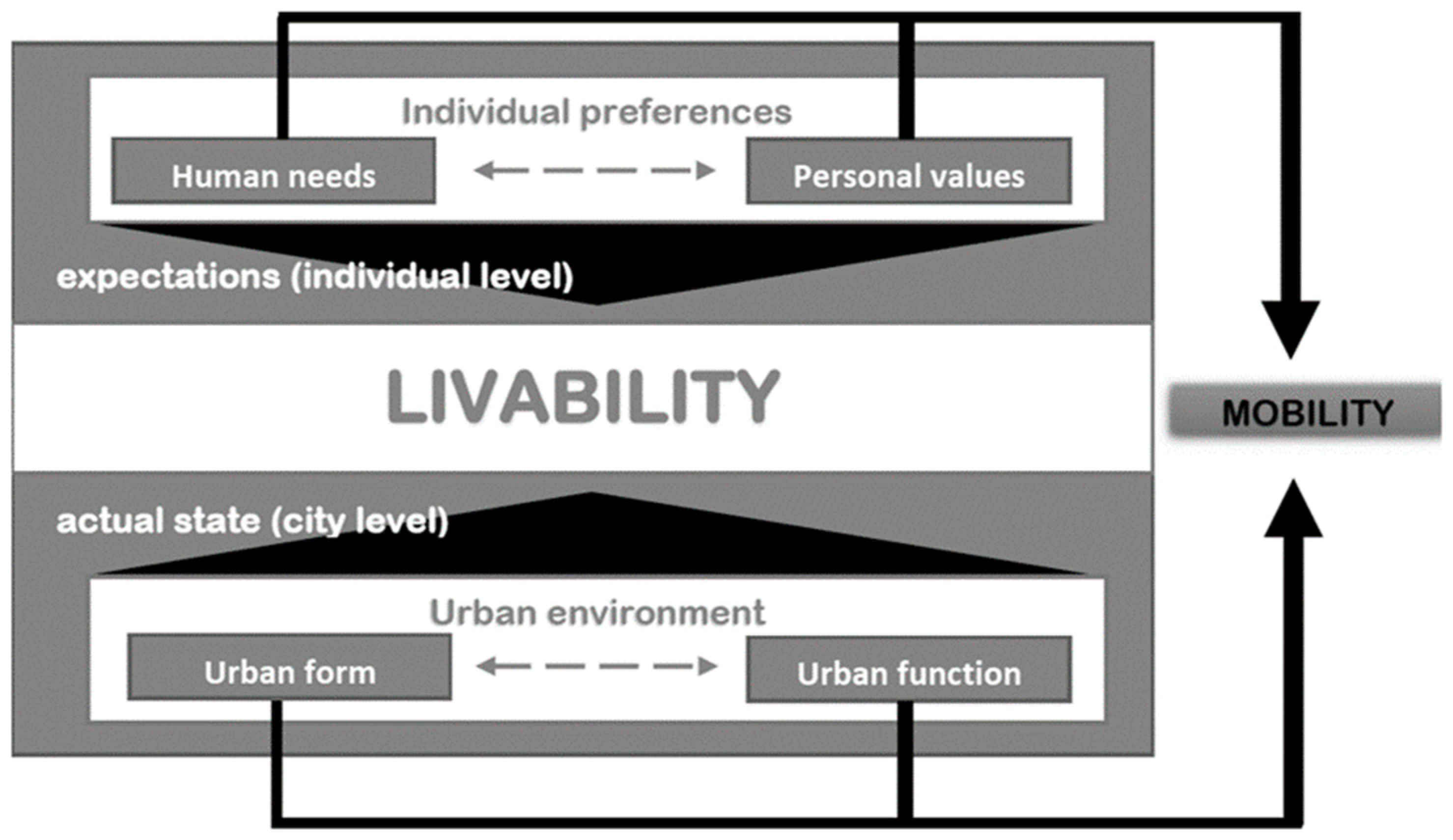
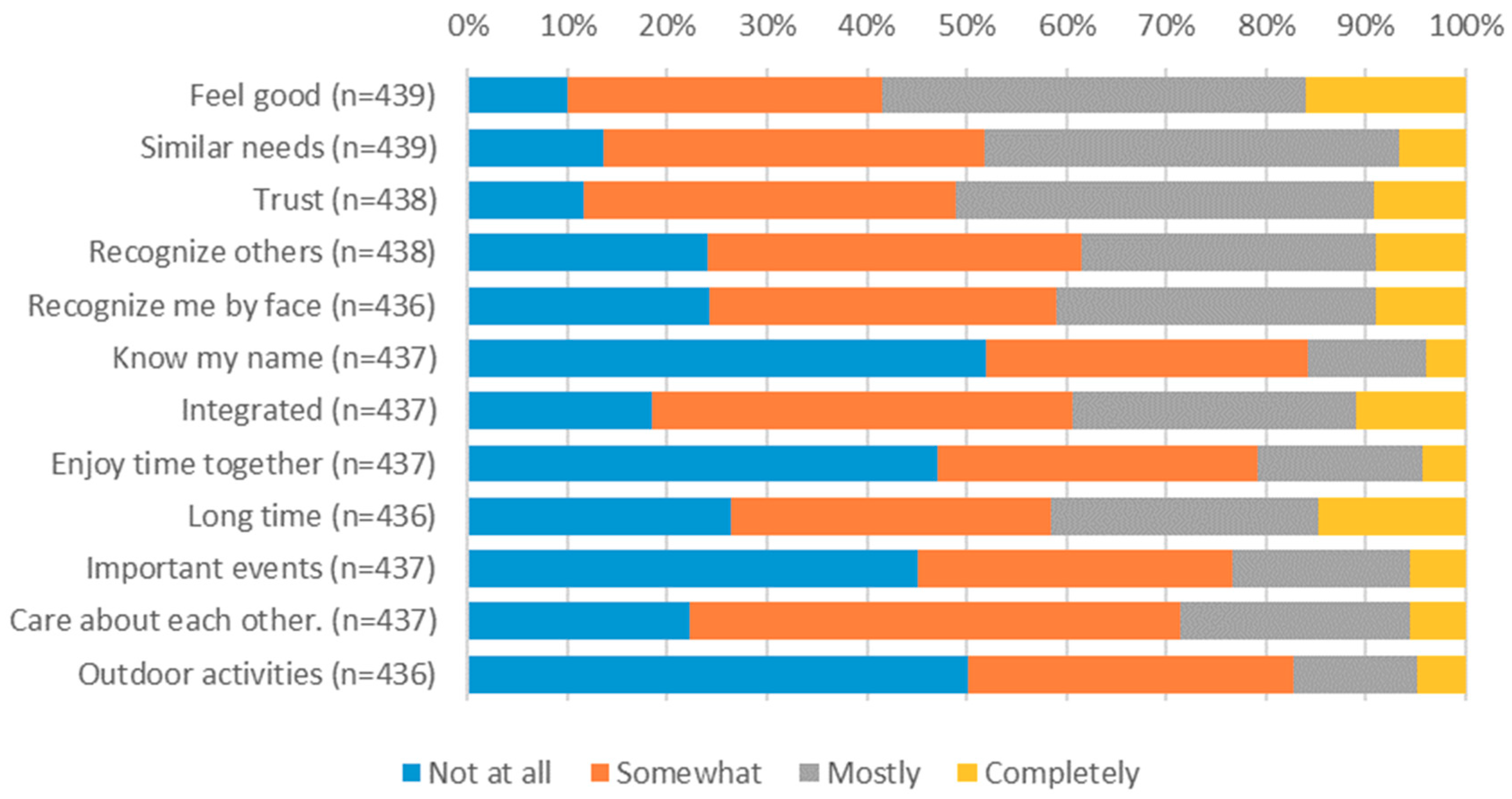
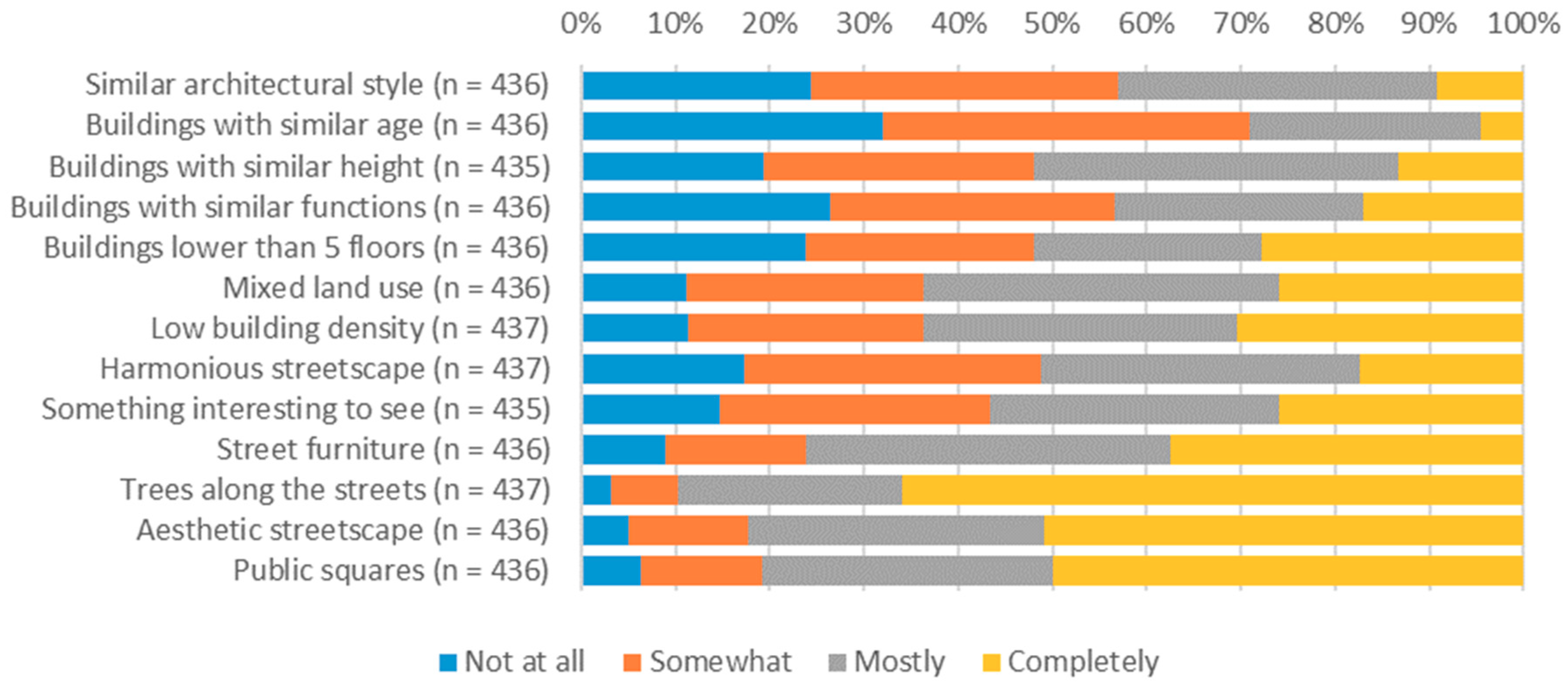
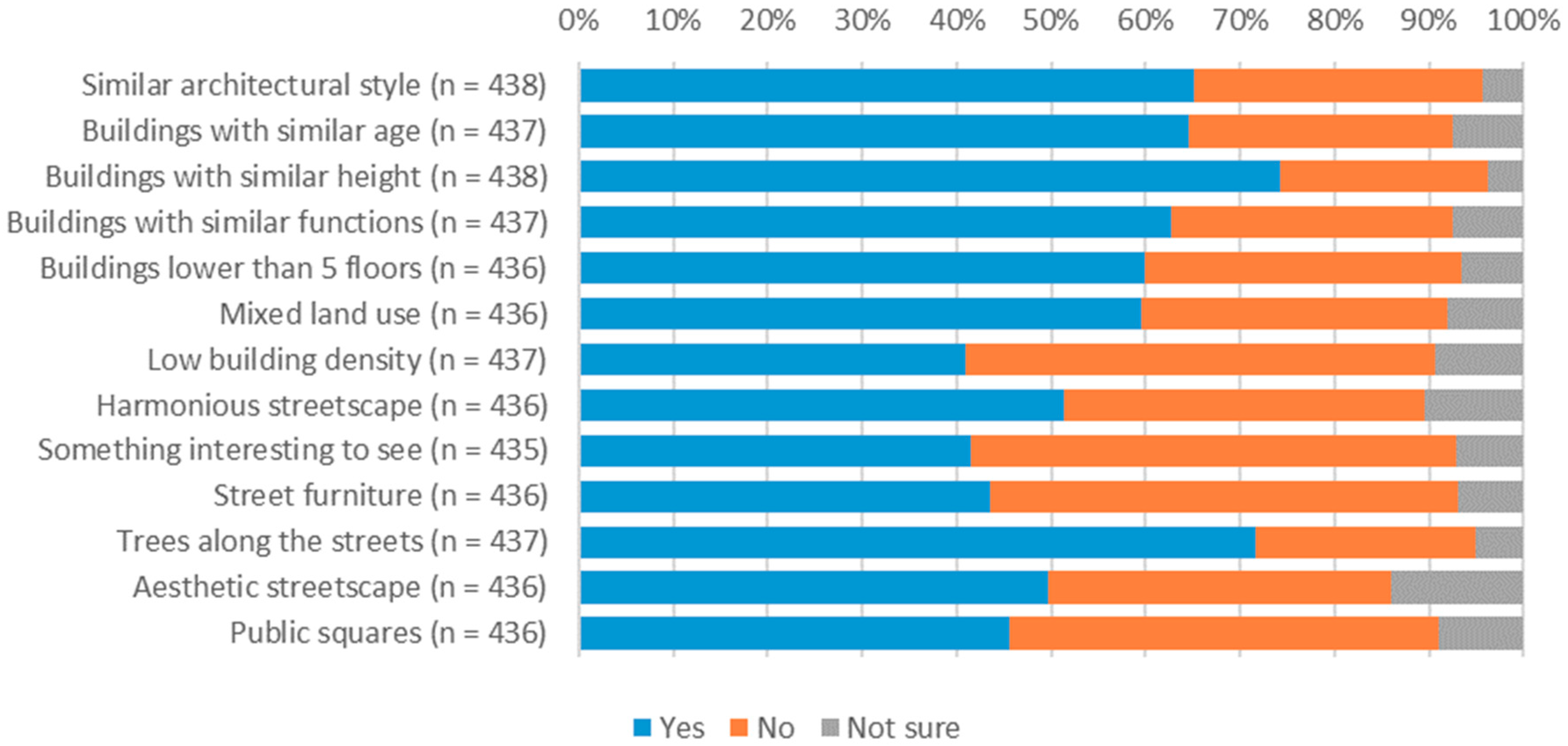
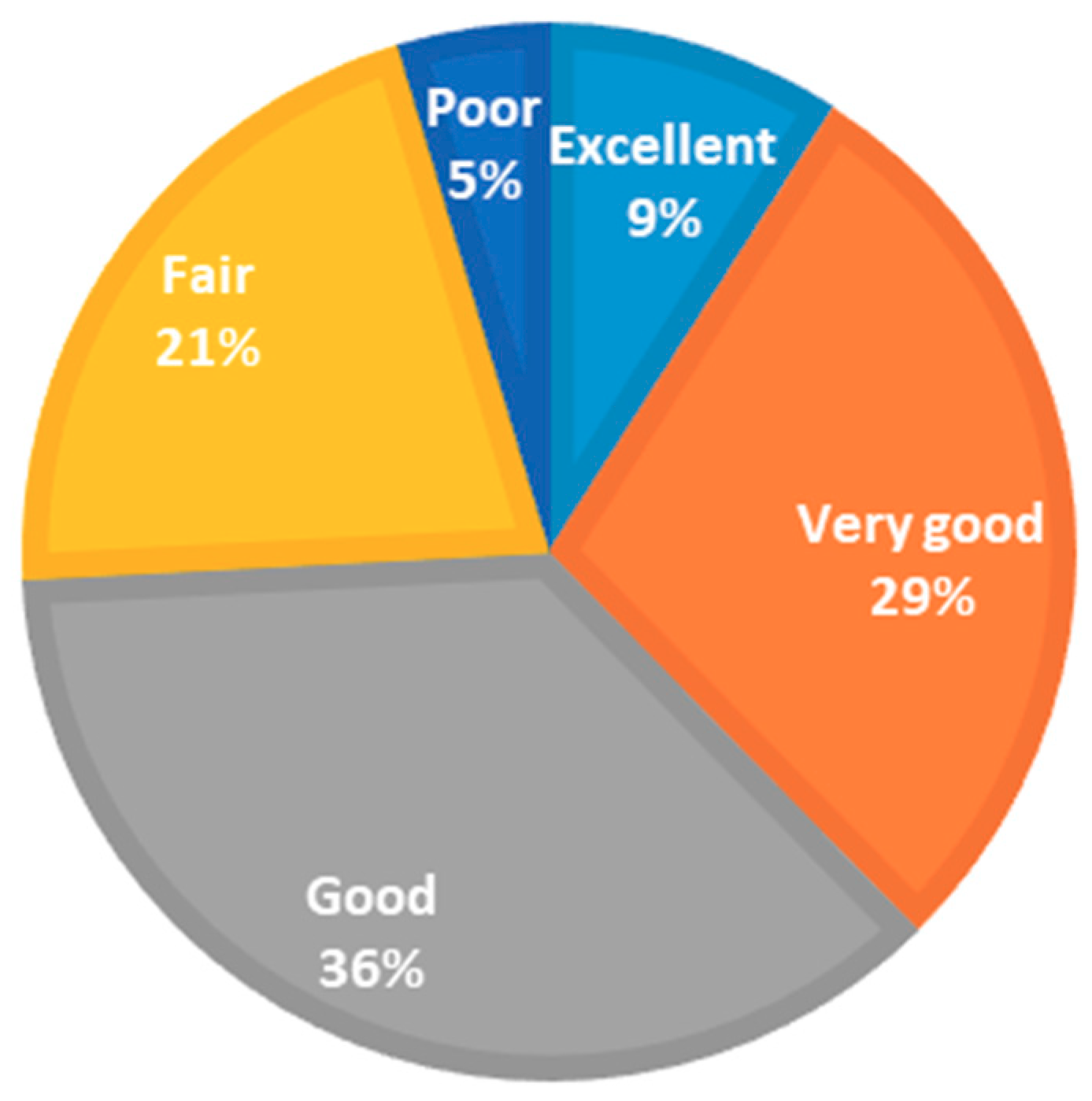
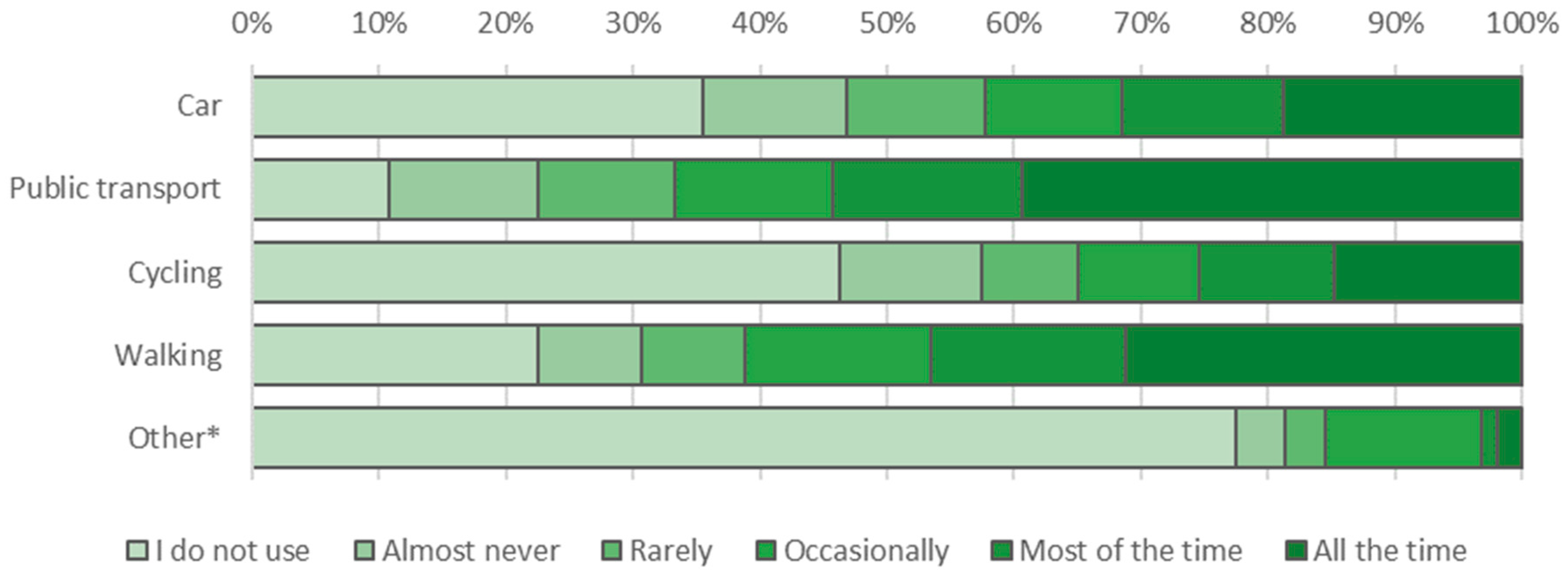

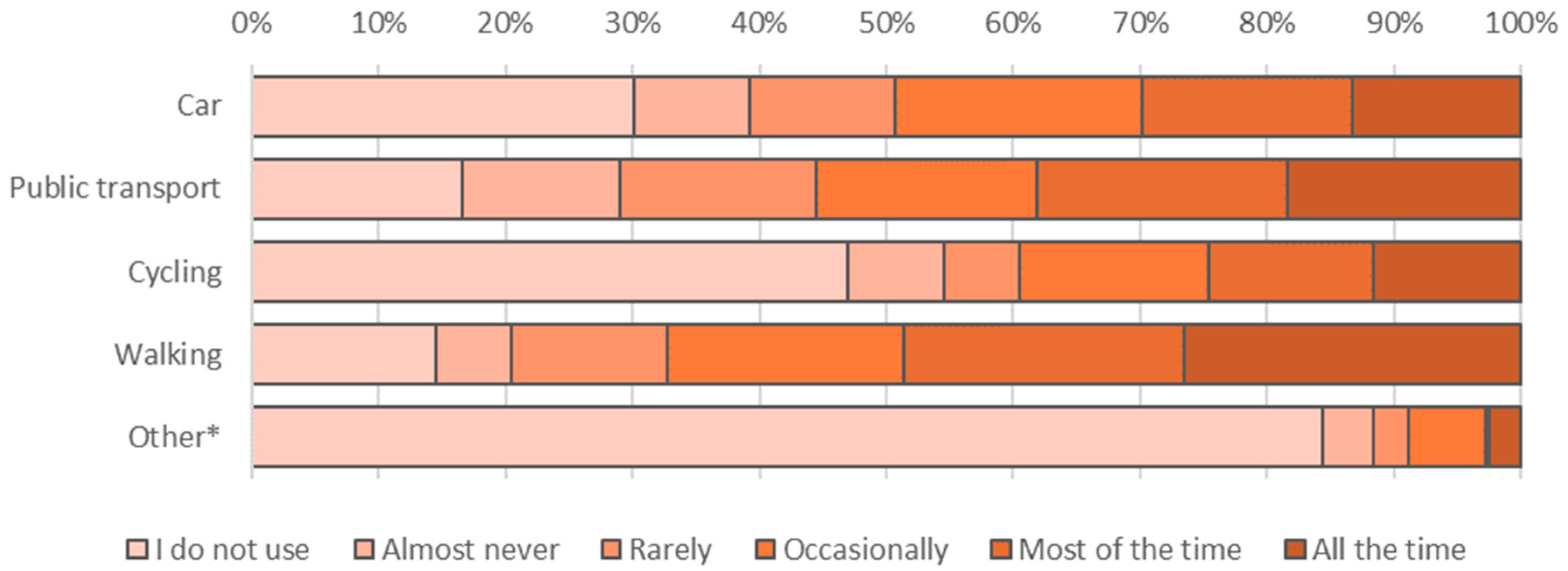

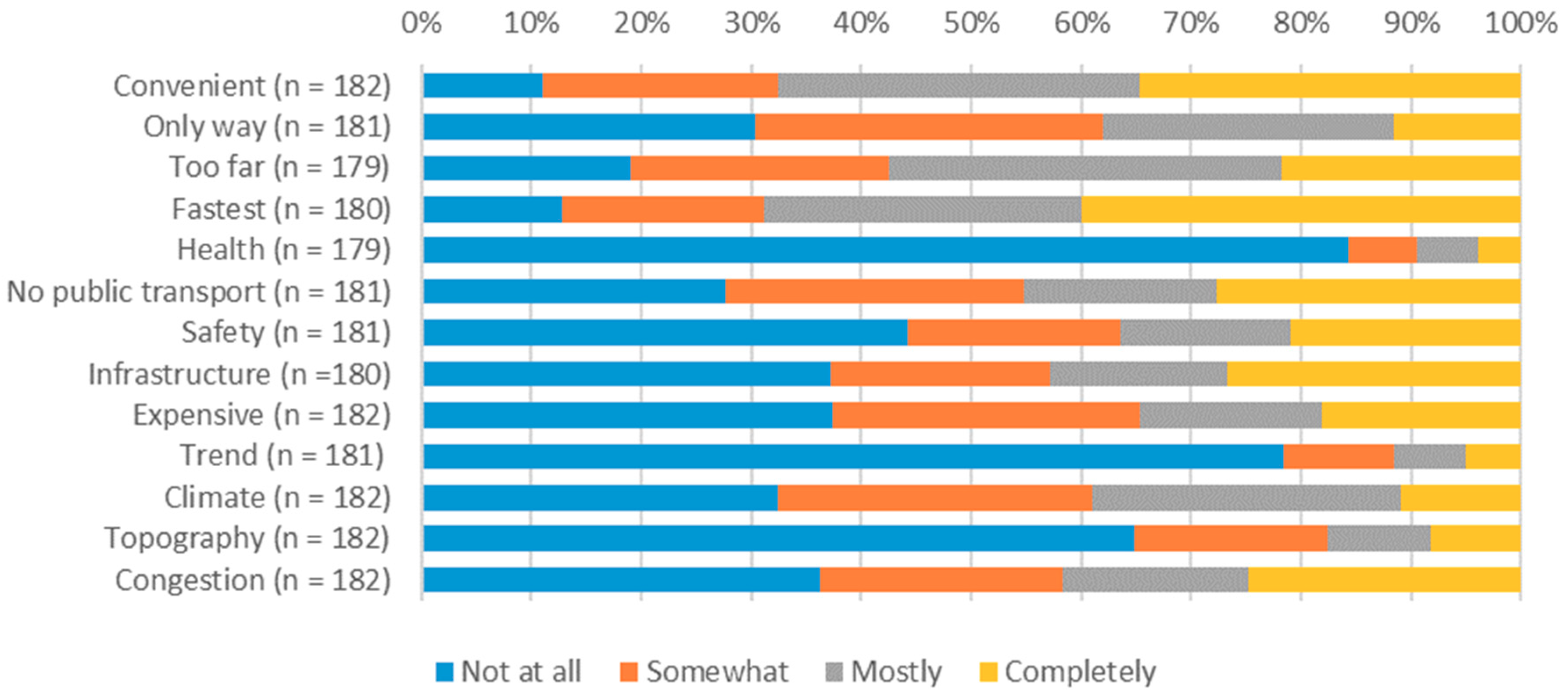

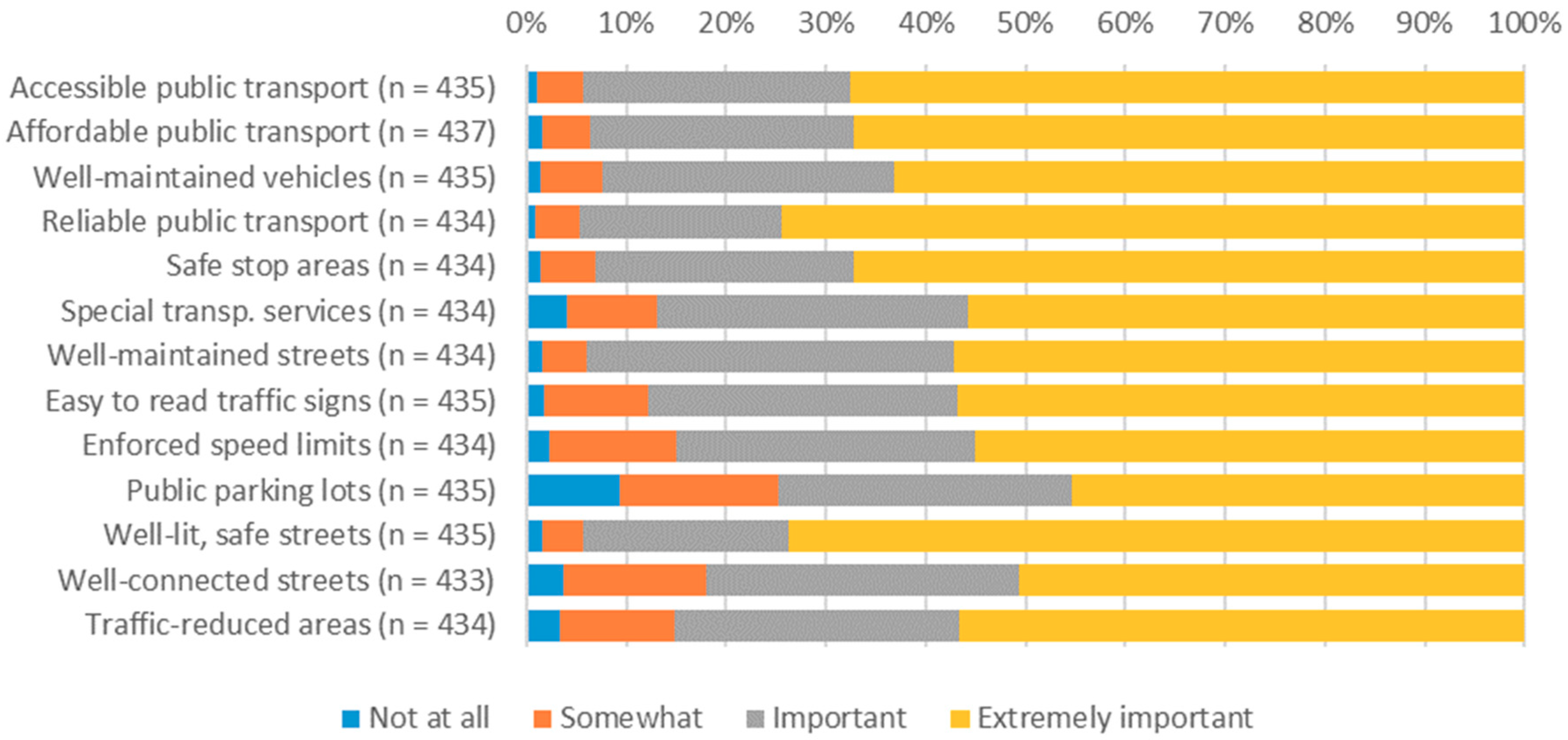
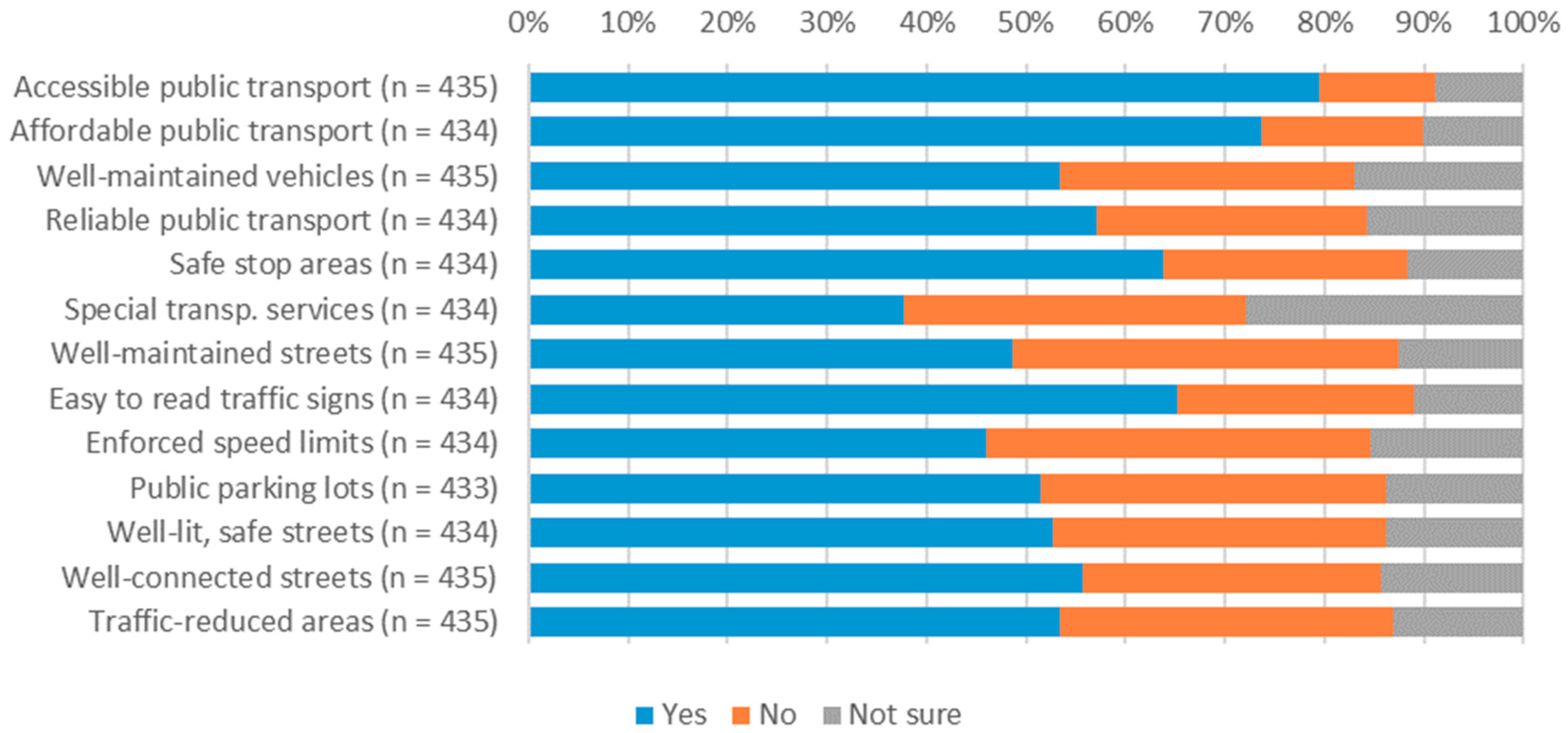


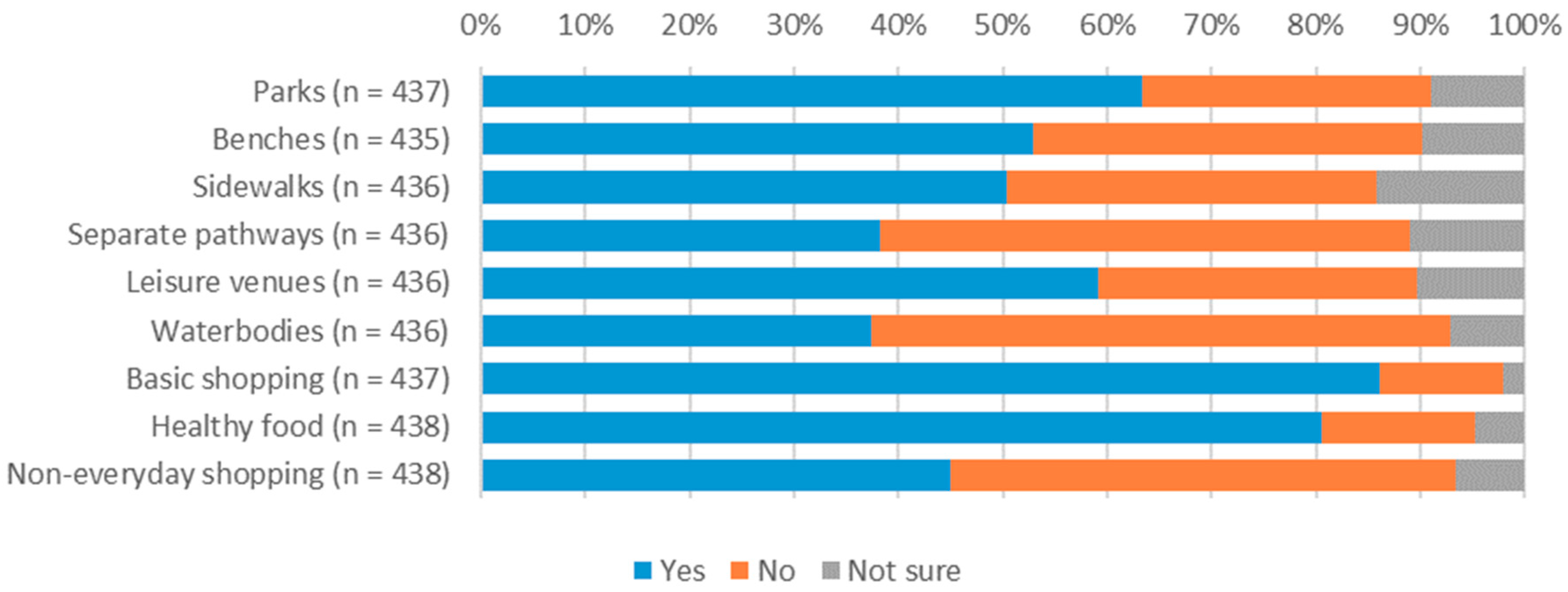


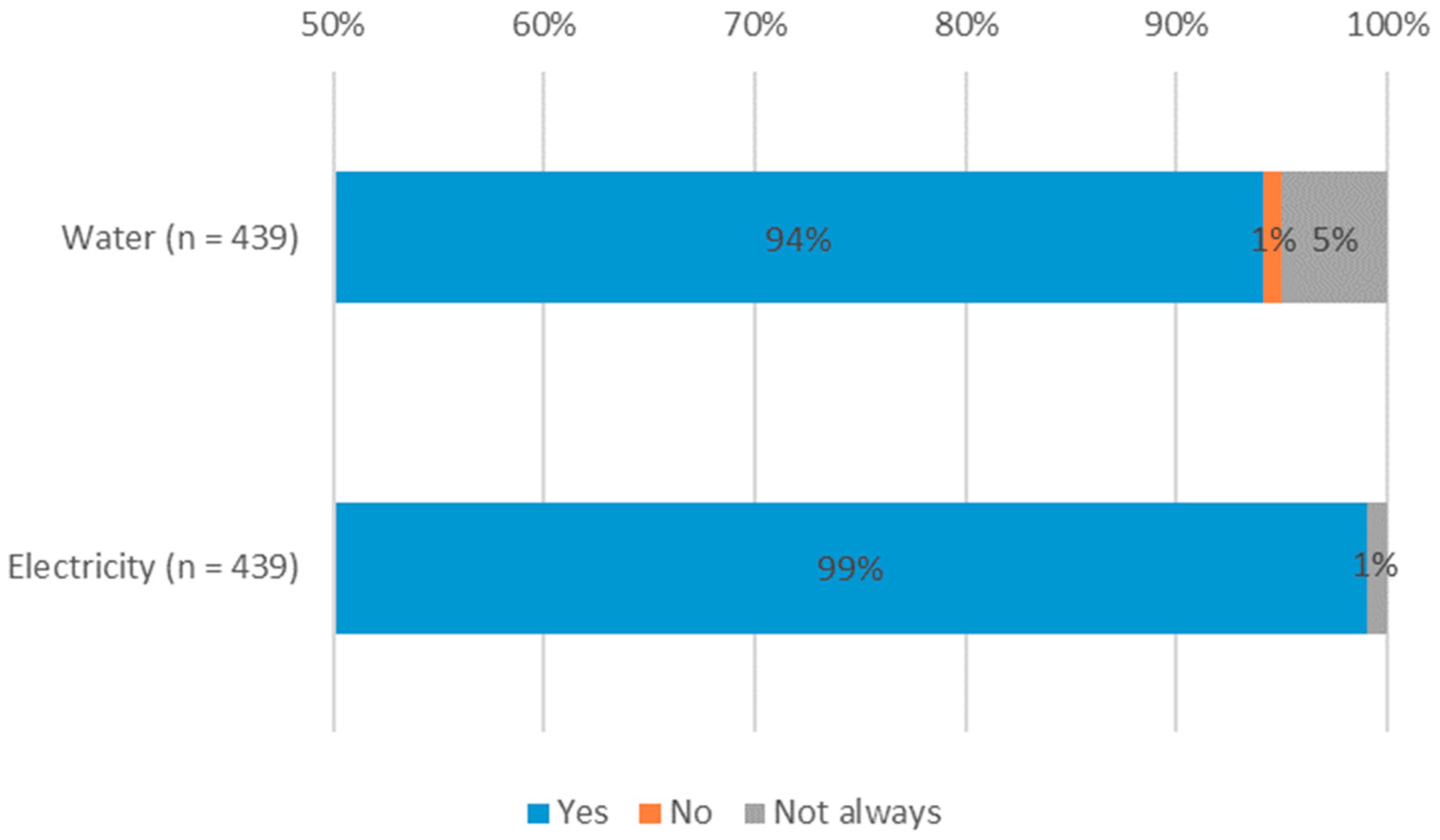
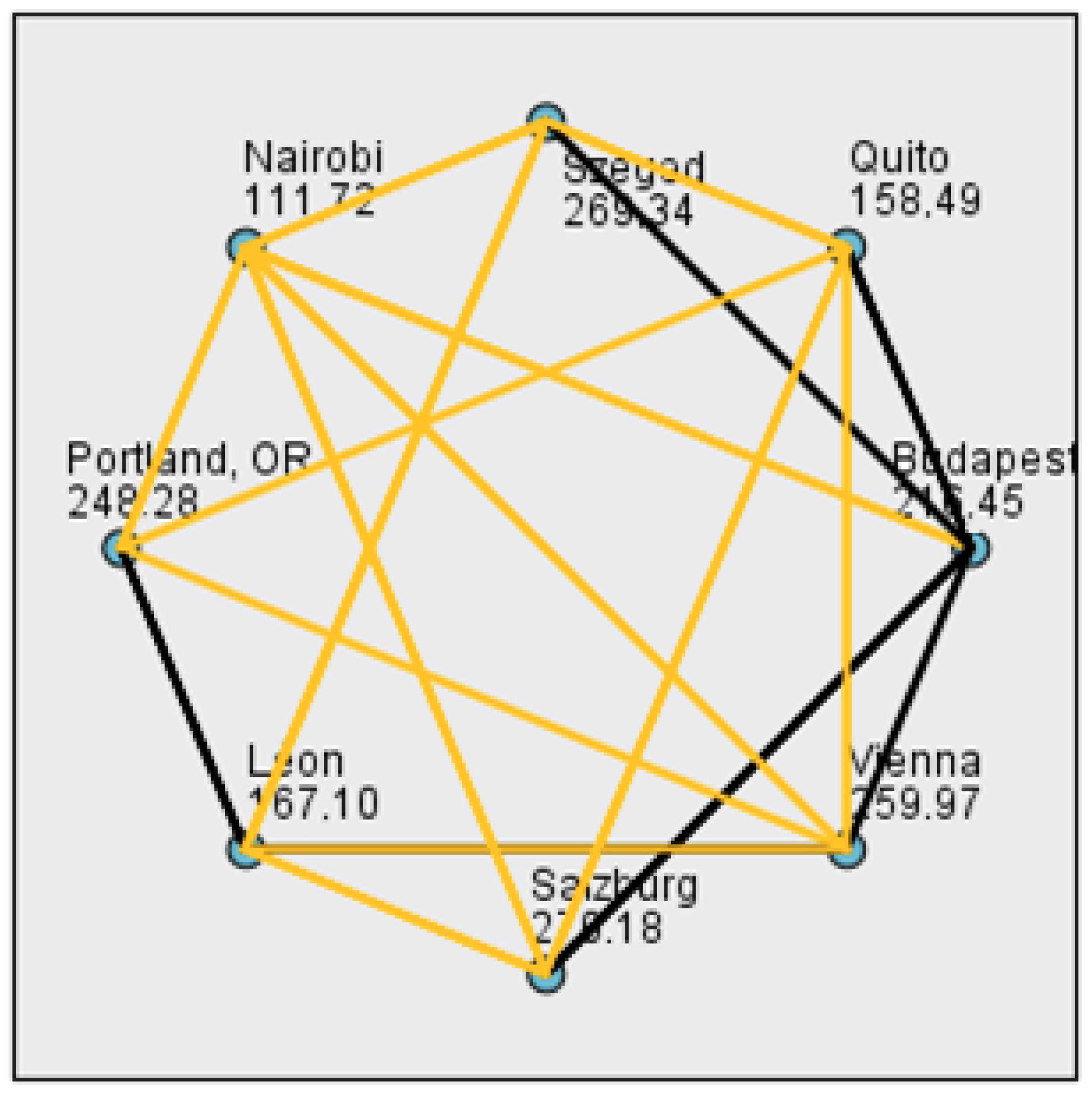

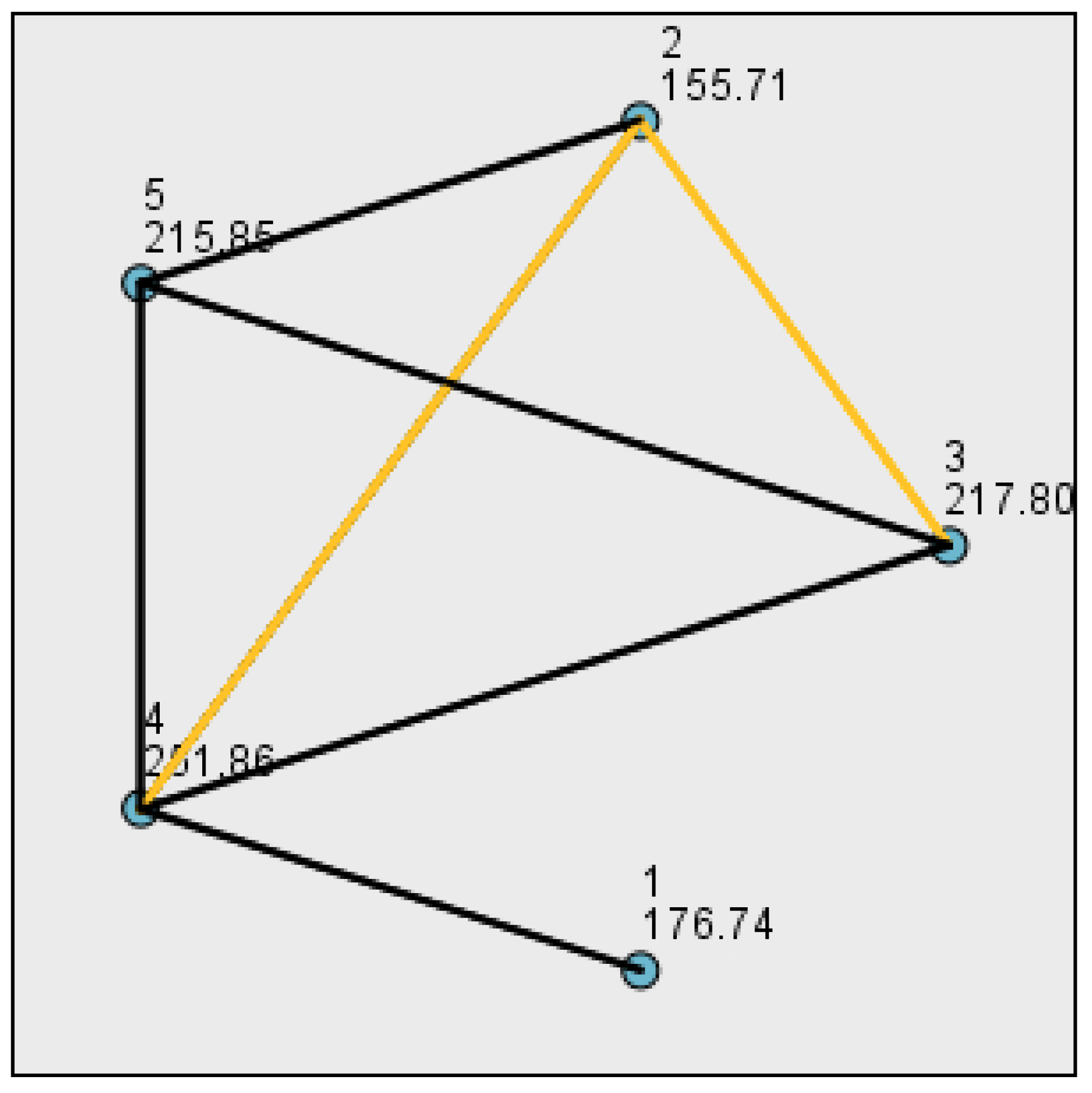
| Country | City | Population | Number of Responses * | |
|---|---|---|---|---|
| Nicaragua | Léon | 168,000 [14] | 32 * | 131 responses from developing countries |
| Kenya | Nairobi | 5,970,000 [15] | 46 * | |
| Ecuador | Quito | 2,700,000 [16] | 53 | |
| Austria | Vienna | 1,900,000 [17] | 91 | 309 responses from developed countries |
| Salzburg | 154,000 [17] | 51 | ||
| United States | Portland, OR | 653,000 [18] | 43 | |
| Hungary | Budapest | 1,800,000 [19] | 69 | |
| Szeged | 161,000 [19] | 55 | ||
| Variable | Value |
|---|---|
| Place of residence (n = 440) | see Table 1 |
| Sex (n = 438) | 58% female 42% male |
| Age (n = 437) | 1% below 18 14% 18–25 40% 26–35 22% 36–45 10% 46–55 7% 56–65 7% Above 65 |
| Marital status (n = 438) | 35% married 21% living with a partner 35% single 5% divorced 3% separated only two persons widowed |
| Nationality (n = 437) | 51 people different from locals |
| Number of persons in the household (n = 437) | 24% alone, 33% 2 32% 3 or 4 11% more than 4 |
| Composition of the household (n = 438) * multiple conditions can be true | 27% has children under 18, 10% children over 18, 11% lives with parents, 50% lives together with other relative or friend |
| Education (n = 438) | 1% elementary school 10% high school 16% post-high school 25% Bachelor 37% Masters 9% PhD or higher 3% other |
| Household income compared to basic needs (n = 433) | 4% much less 18% less 33% the amount 36% more 8% much more |
| Variable | Value |
|---|---|
| Length (n = 440) | 43% less than 5 years 27% 5–15 14% 16–25 8% 26–35 8% more than 35 |
| Satisfaction (n = 440) | 5% not at all 17% somewhat 49% mostly 30% completely |
© 2019 by the authors. Licensee MDPI, Basel, Switzerland. This article is an open access article distributed under the terms and conditions of the Creative Commons Attribution (CC BY) license (http://creativecommons.org/licenses/by/4.0/).
Share and Cite
Kovacs-Györi, A.; Cabrera-Barona, P. Assessing Urban Livability through Residential Preference—An International Survey. Data 2019, 4, 134. https://doi.org/10.3390/data4040134
Kovacs-Györi A, Cabrera-Barona P. Assessing Urban Livability through Residential Preference—An International Survey. Data. 2019; 4(4):134. https://doi.org/10.3390/data4040134
Chicago/Turabian StyleKovacs-Györi, Anna, and Pablo Cabrera-Barona. 2019. "Assessing Urban Livability through Residential Preference—An International Survey" Data 4, no. 4: 134. https://doi.org/10.3390/data4040134
APA StyleKovacs-Györi, A., & Cabrera-Barona, P. (2019). Assessing Urban Livability through Residential Preference—An International Survey. Data, 4(4), 134. https://doi.org/10.3390/data4040134






